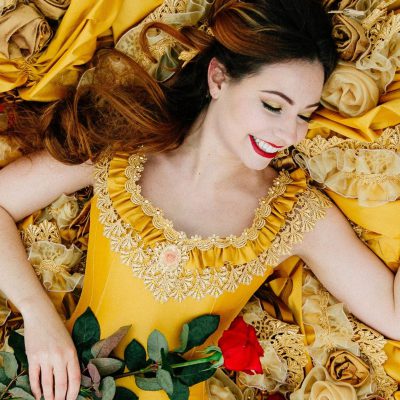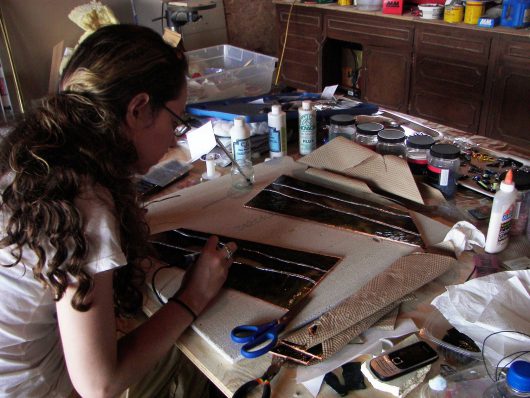
Kristin Harsma is an an artist, model, costumer and stagehand/technician. Her work spans different media and genres, including stained glass, sewing, aerial arts, cosplay & photography. Stained glass is her primary medium. Kristin received a Bachelor of Fine Arts from Minnesota State University with concentrations in Sculpture and Theatre Technology. She studied sculpture and mosaics in Florence, Italy where she had the opportunity to visit marble workshops in Carrara and the mosaics of Ravenna. The supposed division between art and craft is something she faces in her own work as a sculptor working in the medium of stained glass.
In March 2018, Kristin curated a group exhibition at the non-profit Artspace Jackson Flats facility in East Minneapolis. She organized the show, “Beauty in Every Body,” around the theme of body positivity with the goal of encouraging positive change in attitudes towards gender, self-image and sexuality. The show was scheduled to coincide with Valentine’s Day. When a fellow resident took issue with the nudity depicted in some of the pieces, an Artspace manager demanded their removal. Kristin responded: “The show is supposed to be a call for positive change. None of the work was vulgar. It wasn’t offensive. The show is about accepting people loving people for who they are no matter what their background is.”
NCAC sent a letter to Artspace criticizing its lack of transparent, reasonable exhibition policies, pointing out that this lack of policy gives its administrators free reign to censor works by the very people it is supposed to advocate for. The letter also notes that if simple nudity was routinely considered reasonable grounds for excluding artwork from public exhibition, vast amounts of art, including many masterpieces, would be off limits: “If we are to remove nudes from art in the public sphere, we will lose some of the most important and edifying artworks of human history, including works by Michelangelo, Titian, Rembrandt, Manet, Rodin, Degas, Modigliani and Picasso, to name but a few artists for whom the nude was central. By removing nudes from public view, we remove access to a living language of visual expression and its centuries-old heritage. But more than that, wrapping the human form in shame alienates us from our own bodies.”


